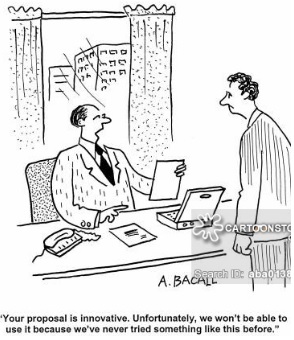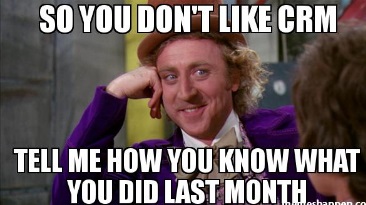…. Or Why Your Sales VP Just Quit
It happens every day. A growing business hires a sales leader from outside to “take us to the next level”. The new guy or girl walks through the door ready to share their experience. That’s a big part of why they were hired. The business’ leadership is excited about the new ideas, knowledge and experience their new sales leader will bring to the table. They just had no idea that new tools like a CRM solution and Marketing Automation were going to be involved.
A few weeks after starting, the new sales VP has a formal plan worked up that includes lots of changes and investments. The rubber has officially hit the road. Suddenly, the executive team is starting to wonder if they made the wrong decision.
The business owner, we’ll call him Bob, looks over all the proposed changes and investments and says “We’ve been successful without this stuff for so long. Why now?” In the back of their mind, they’re really thinking “I was hoping you’d get out there and help our team sell more, not spend all your time with technology and training and consultants.”
However, Steve, the newly hired sales VP, knows the value of investing in things like a CRM solution as an essential tool in managing the overall sales process.
Here’s Steve’s Plan:
- Understand the market and the products
- Meet some customers
- Understand the current sales process
- Map out a new and improved sales process
- Evaluate the sales team in light of the new sales process
- Train the sales team on the new process and replace those that can’t make it work
- When the process and the team are one and working well, scale it up!
So, around step 3 or 4, Steve wants to start making investments in tools to measure what’s happening in the sales process, like online CRM, marketing automation or even mining customer sales history, accounting info, etc.
Those investments are going to be relatively minor. Steve’s hope is that these smaller investments will shed light on bottlenecks in the current process and give him the visibility to successfully implement the new process and then, when the team is seeing success with the new process, sales will be growing and there will be funds to invest in new marketing programs as well, which will probably be much more expensive than the CRM.
We’re Not Understanding Each Other
Clearly, Bob and Steve had different plans in mind to begin with. Of course, Bob should has spelled it out for Steve when he was offered the job: “We need you to come in and work our current system, grow sales, and then some portion of that sales growth can fund investments that you’ll want to make.” Steve could have also spelled his plan out for Bob before accepting the position and confirmed that there was budget available to make some investments in the near term.
However, even that level of really clear, upfront communication is unlikely to bridge the gap. The reason is in the words Bob used when Steve presented him with the plan: “We’ve been successful without this stuff for so long. Why now?”

No CRM for You
In other words, Bob has no intention of changing the way he works. For that matter, Bob doesn’t feel good about asking the top producers on his team to change what they’re doing either.
Face it, most successful businesses grow initially due to the drive of the owner and then often due to the success of one or two really good salespeople.
But, they eventually hit a ceiling. The ceiling is made of disorder. Lack of process. Lack of repeat-ability. Lack of accountability.
They’ve tried to hire additional salespeople but, they can’t teach them to do what they do. That’s what they hired Steve to do. But, they didn’t realize they were going to have to adopt and even champion Steve’s new systems. They thought that stuff would be for all the new salespeople. Not the good old boys…
And so, after a few months or maybe a year or two, Steve is looking for a new gig. He knows that if he can’t get the core leadership group on board with his program, he’ll always be pushing a rope uphill.

